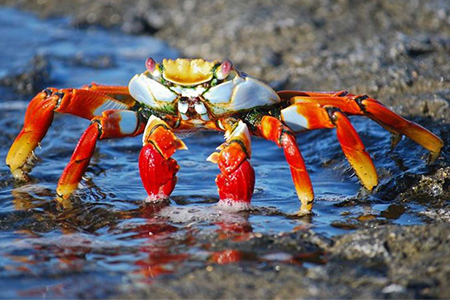
Researchers use shellfish skeleton in new smart textile
YarnsandFibers News Bureau 2020-04-20 11:54:28 – United KingdomResearchers have made a smart textile a process that begins by freeze-spinning silk and material from the outer skeleton of a shellfish.
Writing in Flexible and Robust Biomaterial Microstructured Colored Textiles for Personal Thermoregulation, a paper published by ACS Applied Materials & Interfaces, researchers described a “strong, comfortable fabric that heats and cools skin, with no energy input”.
According to ACS Applied Materials & Interfaces, “the researchers freeze-spun silk and chitosan, a material from the hard outer skeleton of shellfish, into coloured fibres with porous microstructures. They filled the pores with polyethylene glycol (PEG), a phase-changing polymer that absorbs and releases thermal energy. Then, they coated the threads with polydimethylsiloxane to keep the liquid PEG from leaking out. The resulting fibers were strong, flexible and water-repellent”.
Researchers then wove the fibres into a patch of fabric that they could test by putting it into a polyester glove. Someone wearing the glove placed their hand in a hot chamber, where the solid PEG absorbed heat and melted into a liquid, cooling the skin under the patch. When the gloved hand moved to a cold (50 F) chamber, the PEG solidified, releasing heat and warming the skin.
The team — which received funding from the National Natural Science Foundation of China and the WNLO Man-Machine Lab Fund — includes Jiawei Wu, Run Hu, Shaoning Zeng, Wang Xi, Shiyao Huang, Shiyao Huang, Junhui Deng and Guangming Tao, all from the Huazhong University of Science and Technology in Wuhan, China.
They said the process for making the fabric could be scaled up for mass production.
Source: Sports Textiles
Market Intelligence
Ask for free sample Report

experience
Customer Base
dedicated team
Countries Served Worldwide









